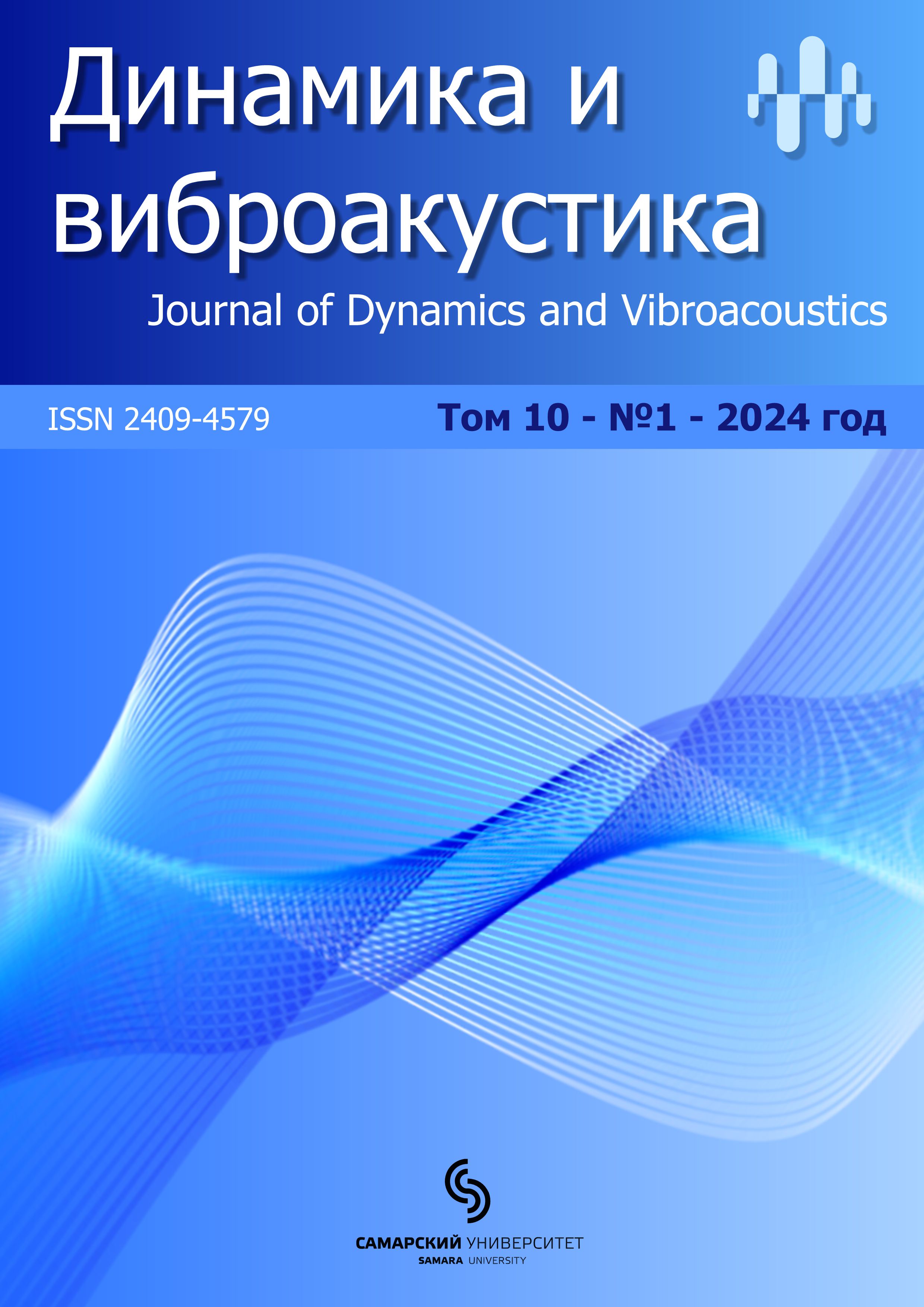Influence of worn on flow characteristics of aircraft engine labyrinth seals
- Authors: Matveev A.A.1, Tisarev A.Y.1, Falaleev S.V.1, Mironova K.A.1
-
Affiliations:
- Samara National Research University
- Issue: Vol 10, No 1 (2024): 6.05.2024
- Pages: 7-20
- Section: Articles
- Published: 06.05.2024
- URL: https://dynvibro.ru/dynvibro/article/view/27390
- DOI: https://doi.org/10.18287/2409-4579-2024-10-1-7-20
- ID: 27390
Cite item
Full Text
Abstract
Labyrinth seals are currently the most common type of sealant in aircraft engines. The article proposes an approach to take into account the value of their cutting into the stator part when determining the air flow rate. The comparison of the results of calculation of characteristics of labyrinth seals taking into account cutting of seal combs into the stator part with the use of semi-empirical and numerical models is carried out. The nature of the change in air flow through the seal is revealed when the geometric parameters of the grooves in the stator part change as a result of wear of the actuated coating when the ridge of the labyrinth seal is inserted. The most effective semi-empirical models for calculating the characteristics of such seals for various wear patterns and gap sizes are proposed, as well as recommendations for their modernization to improve the accuracy of calculations.
Keywords
About the authors
Andrey A. Matveev
Samara National Research University
Email: vut.13@mail.ru
Engineer
Russian Federation, SamaraAndrey Yu. Tisarev
Samara National Research University
Email: ay.tisarev@uec-kuznetsov.ru
Candidate of Science (Engineering), Associate Professor of the Department of Construction and Design of Aircraft Engines
Russian Federation, SamaraSergey V. Falaleev
Samara National Research University
Author for correspondence.
Email: falaleev.sv@ssau.ru
Doctor of Science (Engineering), Professor, Head of the Department of Construction and Design of Aircraft Engines
Russian Federation, SamaraKseniya A. Mironova
Samara National Research University
Email: ka.bedenko@uec-kuznetsov.ru
Postgraduate student
Russian Federation, SamaraReferences
- Sirotin, N. N., Novikov, A. S., Paikin, A. G. and Sirotin, A. N. (2011), Osnovy konstruirovaniya, proizvodstva i ekspluatatsii aviatsionnykh gazoturbinnykh dvigateley i energeticheskikh ustanovok v sisteme CALS-tekhnologiy. Kn.1: Konstruktsiya i prochnost' GTD i EU [Fundamentals of Design, Production and Operation of Aviation Gas Turbine Engines and Power Plants in the System of CALS-technologies. Book 1: Design and Strength of Gas-Turbine Engines and Power Plants], Moscow, Russia. (In Russian).
- Tisarev, A., Falaleev, S. and Vinogradov, A. (2014), "Calculation of Labyrinth Seals in the Secondary Air System of Aircraft Engine", The Open Mechanical Engineering Journal, vol. 8, pp. 482-488.
- Stodola, A and Smith, P. (1945), Steam and Gas Turbines (translated by Loewenstein, L. C.), New York, vol. 1, 592 p.
- Golubev, A. I., Kondakov, L. A., Ovander, V. B., Gordeev, V. V., Furmanov, B. A. and Karmugin, B. V. (1994), Uplotneniya i uplotnitel'naya tekhnika: Spravochnik [Seals and sealing technology : Reference book], Mashinostroenie, Moscow, Russia. (In Russian).
- Dogu, Y., Sertçakan, M. C., Gezer, K., Kocagül, M., Arican, E. and Ozmusul, M. S. (2016),"Labyrinth seal leakage degradation due to various types of wear", Proceedings of the ASME Turbo Expo 2016: Turbomachinery Technical Conference and Exposition. Volume 5A: Heat Transfer, Seoul, South Korea, June 13–17, GT2016-57944, V05AT15A033.
- Gamal, A. J. M. and Vance, J. M. (2008), "Labyrinth seal leakage tests: tooth profile, tooth thickness, and eccentricity effects", Journal of Engineering for Gas Turbines and Power, vol. 130, no. 1, article 012510.
- Rhode, D. L. and Allen, B. F. (1999), "Measurement and visualization of leakage effects of rounded teeth tips and rub-grooves on stepped labyrinths", Proceedings of the ASME 1999 International Gas Turbine and Aeroengine Congress and Exhibition. Volume 3: Heat Transfer; Electric Power; Industrial and Cogeneration, Indianapolis, Indiana, USA, June 7–10, 99-GT-377, V003T01A092.
- Szymanski, A. and Dykas, S. (2019), "Evaluation of leakage through labyrinth seals with analytical models", Task quarterly, vol. 23, no.1, pp. 61-73.
- Martin, H. M. (1908), “Labyrinth Packings”, Engineering, vol. 85, pp. 35-36.
- Hodkinson, B. (1939), "Estimation of the Leakage through a Labyrinth Gland", Proceedings of the Institution of Mechanical Engineers, vol.141, pp. 283–288.
- Egli, A. (1935), "The Leakage of Steam through Labyrinth Seals", Transactions of the ASME, pp. 115-122.
- Zimmerman, H., Kammerer, A. and Wolff, K. H. (1994), "Performance of Worn Labyrinth Seals", Proceedings of the ASME 1994 International Gas Turbine and Aeroengine Congress and Exposition. Volume 1: Turbomachinery, The Hague, Netherlands, June 13–16, 94-GT-131, V001T01A042.
- Zimmerman, H., Wolff, K. H. (1998), "Air System Correlations Part 1: Labyrinth Seals", Proceedings of the ASME 1998 International Gas Turbine and Aeroengine Congress and Exhibition. Volume 4: Heat Transfer; Electric Power; Industrial and Cogeneration, Stockholm, Sweden, June 2–5, 98-GT-206, V004T09A048.
- Technical guidance material 108.020.33-86 (1988), Uplotneniya labirintnye statsionarnykh parovykh i gazovykh turbin i kompressorov [Labyrinth seals for stationary steam and gas turbines and compressors], NPO TsKTI [Polzunov Research and Production Association for Research and Design of Power Equipment], 73 p.
- Kapinos, V. M. and Slitenko, A. F. (1983), Teplovye protsessy v vysokotemperaturnykh apparatakh i konstruktsiyakh. Metod i programma rascheta sistem okhlazhdeniya: otchet o nauchno-issledovatel'skoy rabote [Thermal processes in high-temperature apparatuses and structures. Method and program for calculation of cooling systems: report on research work], V. I. Lenin Kharkiv Polytechnic Institute of the Order of Lenin, Kharkov, Russia, 75 p. (In Russian).
- Vakili, A.D., Meganathan, A.J., Michaud and Radhakrishnan M. (2005), "An Experimental and Numerical Study of Labyrinth Seal Flow", Proceedings of ASME Turbo Expo 2005: Power for Land, Sea and Air, Nevada, USA, June 6–9, GT2005–68224, pp. 1121–1128.
- Soemarwoto, B. I., Kok, J. C., de Cock, K. M. J, Kloosterman, A. B., Kool, G. A. and Versluis, J. F. A. (2007), "Performance Evaluation of Gas Turbine Labyrinth Seals Using Computational Fluid Dynamics", Proceedings of the ASME Turbo Expo 2007: Power for Land, Sea, and Air. Volume 4: Turbo Expo 2007, Parts A and B, Montreal, Canada, May 14–17, GT2007-27905, pp. 1207-1217.
Supplementary files







